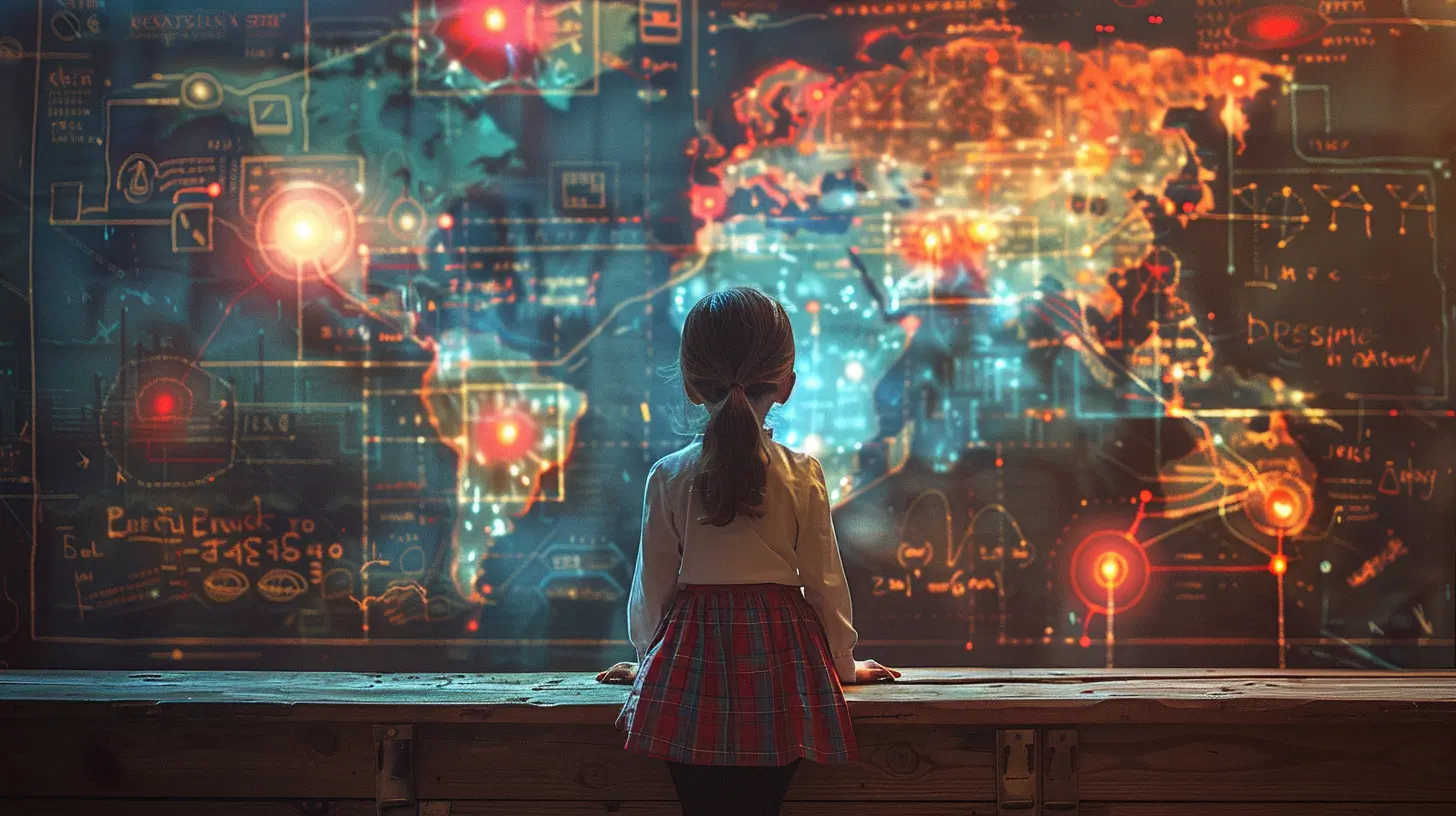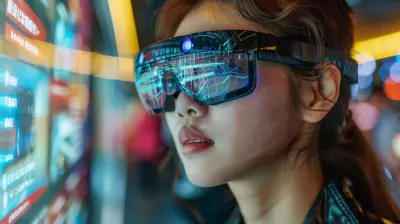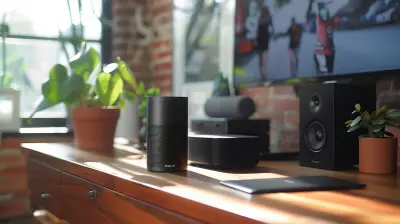Exploring the Role of Tech in Revolutionizing Education
2 June 2025
The world is changing – faster than ever before. And at the heart of this transformation? Technology. From the way we communicate to the way we consume entertainment, tech has its hands in everything. But one area where it’s making a massive impact, and perhaps the most important, is education.
What used to be a traditional textbook-driven classroom experience is now evolving into something more dynamic, engaging, and accessible. Let’s dive into how technology is revolutionizing education, changing the way students learn, and teachers teach.

The Digital Classroom: A New Era in Learning
Remember the days of dusty chalkboards, overhead projectors, and those musty textbooks? Those days are almost gone, thanks to the rise of the digital classroom. With the advent of smartboards, tablets, and e-learning platforms, students now have access to a wealth of information right at their fingertips.1. Technology Expands Learning Opportunities
Technology has opened up a world of learning opportunities that would have been unimaginable a few decades ago. It’s like having a library in your pocket. With a quick Google search or a few taps on an app, students can access textbooks, research papers, educational videos, and even virtual labs.Imagine being able to attend a class on quantum physics from a university halfway across the globe, without ever leaving your bedroom. That’s the promise of tech in education. Not only does it make education more accessible, but it also levels the playing field for students who might not have access to resources like expensive textbooks or tutoring.
2. Personalized Learning: Tailoring Education to the Individual
One size doesn't fit all, right? That’s especially true in education. Every student learns differently, and this is where technology shines. Through adaptive learning platforms, educators can now tailor lessons to fit each student’s unique learning style.Think of it like Netflix’s recommendation algorithm – but for education. These platforms analyze how a student interacts with the material, identify areas they struggle with, and adjust the content to focus on those weaknesses. It’s personalized learning at its finest.
Platforms like Khan Academy and Coursera are already using AI-driven algorithms to provide custom learning experiences. Whether a student is a visual learner or prefers reading, the system adapts to their needs, ensuring they grasp the concepts at their own pace.
3. Gamification: Turning Learning into a Game
Let’s be real – learning isn’t always the most exciting thing in the world. But what if it could be? That’s where gamification comes in. By integrating game-like elements into educational content, tech makes learning more engaging and, dare I say, fun!Points, badges, leaderboards – these are all elements you’ll find in gamified learning platforms. They tap into our innate love for challenge and reward. Think about how addicting video games can be. Now, imagine applying that same principle to learning algebra or history.
Duolingo, a language-learning app, is a perfect example of this. It uses streaks, rewards, and challenges to keep users motivated as they learn new languages. In the process, it transforms what could be a tedious task into something users actually look forward to.

Virtual And Augmented Reality: A New Dimension of Learning
If you think learning from a textbook is cool, wait until you hear about how virtual reality (VR) and augmented reality (AR) are changing the game.4. Virtual Reality: Immersive Learning Experiences
VR allows students to experience things they never could in the real world. Want to walk through the streets of Ancient Rome? Or maybe you’d like to explore the human body from the inside? With virtual reality, students can immerse themselves in these environments without leaving the classroom.Imagine how much more engaging a history lesson could be if students could step into a VR simulation of the Renaissance period. Or how much more effective a biology class could be if students could virtually dissect a frog instead of just reading about it. These immersive experiences help concepts stick in ways that traditional methods just can’t match.
Companies like Oculus and Google are already creating VR tools specifically designed for education. This is just the beginning – the possibilities are endless.
5. Augmented Reality: Bringing Learning to Life
While VR transports students to a whole new world, AR enhances the real one. By overlaying digital information onto the physical world, AR can bring textbooks and diagrams to life.For example, imagine reading about the solar system and then pointing your phone at the textbook to see a 3D model of the planets spinning in orbit. That’s the magic of AR in education. It makes abstract concepts tangible and easier to understand.
Platforms like Google Expeditions are already using AR to allow students to take virtual field trips, transforming the way they interact with educational content. Who needs permission slips when you can explore the pyramids of Egypt from the comfort of your classroom?

The Role of AI in Shaping Future Classrooms
Artificial Intelligence (AI) is no longer just a sci-fi concept. It’s here, and it’s playing a big role in shaping the future of education.6. AI-Powered Tutors: Personalized Support 24/7
AI-powered tutors are becoming increasingly popular. These bots can assist students in real-time, offering help with everything from math problems to essay writing. Unlike human teachers, AI tutors are available 24/7, ensuring that students can get help whenever they need it.Platforms like Squirrel AI are already employing AI to provide one-on-one tutoring, offering students personalized feedback and guidance based on their individual learning needs. These AI tutors can analyze how well students are understanding the material and adjust their teaching strategies accordingly.
7. AI-Driven Assessments: Smarter Testing
The traditional model of testing – standardized exams, multiple-choice questions, and a once-size-fits-all approach – is getting a facelift thanks to AI. AI-driven assessments are much smarter, offering insights into not just what a student knows, but how they think.These assessments can analyze a student’s problem-solving process, identify patterns in their mistakes, and offer targeted feedback to help them improve. It’s a far cry from the basic "correct or incorrect" feedback we’re used to. In fact, it’s more like having a personal coach guiding you through the learning process.
8. Automating Administrative Tasks: Freeing Up Teacher Time
Teachers are superheroes. But like any superhero, they can get bogged down by the more mundane tasks – like grading, organizing lesson plans, and managing administrative duties. AI is stepping in to help.By automating these tasks, AI is freeing up teachers to do what they do best: teach. For example, AI-powered grading systems can instantly grade essays and exams, providing feedback and even offering suggestions for improvement. This allows teachers to focus more on interacting with their students and less on paperwork.

Remote Learning: The New Normal
The COVID-19 pandemic forced schools around the world to shut down, leaving educators scrambling to find new ways to teach. Enter remote learning – the ultimate test of how technology can keep education going, even in the most challenging of circumstances.9. E-Learning Platforms: Learning From Anywhere
Zoom, Google Classroom, Microsoft Teams – these platforms became household names almost overnight. They allowed teachers to continue delivering lessons, and students to keep learning, even when they couldn’t be in the classroom physically.While remote learning isn’t without its challenges (technical issues, lack of in-person interaction, and so on), it has proven that education can happen anywhere, anytime. The flexibility of e-learning platforms means that students can learn at their own pace, and even revisit lessons they didn’t fully grasp the first time.
10. The Rise of Hybrid Learning Models
As schools reopen, many are adopting hybrid learning models – a combination of in-person and online education. This new model allows for greater flexibility, giving students the best of both worlds. They can attend traditional classes while also having the option to access online resources, submit assignments digitally, and even participate in virtual group projects.Hybrid learning is likely here to stay, and it’s a model that embraces the strengths of both traditional and tech-driven education.
The Challenges of Tech in Education
While tech is undoubtedly transforming education for the better, it’s not without its challenges.11. The Digital Divide: Not Everyone Has Access
One of the biggest hurdles in the adoption of tech in education is the digital divide. Not all students have access to the devices, software, or internet connections they need to take full advantage of tech-driven learning.This inequality can widen the gap between students with access to technology and those without, leading to potential disparities in academic performance. It’s crucial that as we move forward, we work to ensure that technology is accessible to all students, regardless of their socioeconomic background.
12. Screen Time Concerns: Balancing Tech With Real-World Interaction
Another concern is the amount of screen time students are getting. As education becomes more digitized, it’s important to strike a balance between screen time and real-world interaction. While technology can be a powerful tool, it’s essential that students also develop skills like face-to-face communication, collaboration, and critical thinking, which can’t always be taught through a screen.
Conclusion: The Future of Education is Bright
Technology has already begun to revolutionize education, and it’s only going to continue to do so. From personalized learning to virtual reality, the possibilities are endless. While there are challenges to overcome, the potential benefits far outweigh the drawbacks.As we move into the future, it’s clear that technology isn’t just a tool for learning – it’s shaping the very future of education itself.
all images in this post were generated using AI tools
Category:
Tech NewsAuthor:

Gabriel Sullivan
Discussion
rate this article
3 comments
Arwenia McNulty
Technology has the power to transform education by enhancing accessibility and personalization. Embracing innovative tools can create engaging learning experiences, fostering critical thinking and adaptability in a rapidly changing world.
June 17, 2025 at 12:41 PM

Gabriel Sullivan
Thank you for your insightful comment! I completely agree—technology indeed enables greater accessibility and personalization in education, fostering essential skills for the future. Your perspective highlights the transformative potential of innovative tools in learning.
Fatima Kane
This article sparks intriguing possibilities! It’s fascinating to see how technology can reshape learning experiences, making education more accessible and engaging for all.
June 9, 2025 at 3:13 AM

Gabriel Sullivan
Thank you! I'm glad you found it intriguing. Technology indeed has the power to transform education in remarkable ways!
Rex McEachern
Tech has immense potential to transform education, making learning more accessible and engaging.
June 5, 2025 at 10:41 AM

Gabriel Sullivan
Absolutely! Technology can bridge gaps and enhance engagement, paving the way for a more inclusive and dynamic learning experience.


